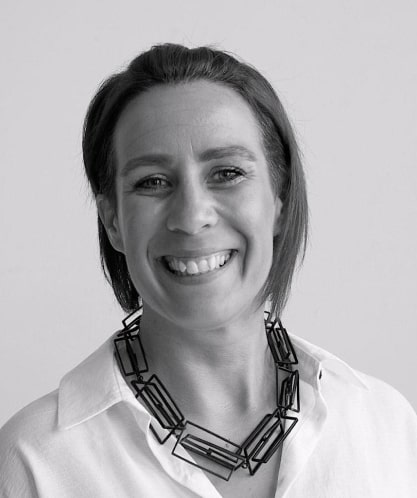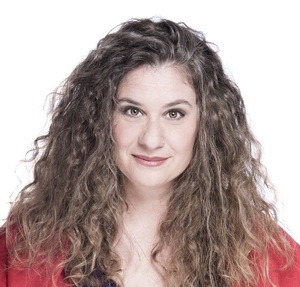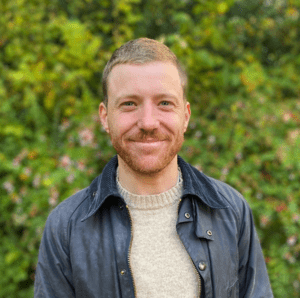Passionate end to end CX consultant with a knack for distilling complexity into simplicity.
Understanding the role of the customer & the impact of customer churn
Listen on:
About this episode
Are you focused on acquisition to grow your business? Well, there may be some low-hanging fruit to grow faster that you're missing. In this podcast, Anita Toth and Barbara Stewart show their passion for the customer, and why businesses really need to focus on customer retention. Listen to learn the warning signs that your company can no longer ignore customer churn and what steps you can start taking today to get more customers coming back for more, so that your business can grow even faster.
What they talked about:
- Why focusing on churn is challenging, but most important
- How to increase word of mouth marketing, referrals, and customer loyalty
- What going to the doctor has to do with customer churn
- How to have conversations with and listen to your customers
Transcript
Barbara Stewart: Anita it is an absolute pleasure to get to actually chat with you and discuss everything we are both incredibly passionate people about the role of customer, and why businesses need to really focus on customer retention. With that in mind, I want to give you a big sticky question to start with, do you think nine is the time that businesses are really starting to understand and take customer retention? Seriously?
Anita Toth: Yeah, that’s a huge question. So I work, particularly with software as a service company, SAAS companies b2b, I’m starting to see that there are more companies that are talking retention earlier in the process. I, what I’ve typically seen and I think is, is, for most companies, when they’re growing from very small, so they’re just a startup. And in the growth phase, the focus is on growth via acquisition. And often what happens is they reach a point where they can no longer ignore that they need to deal with retention. And so what ends up happening is, you know, they’ve been hemorrhaging money for a while, their retention isn’t so great, or in my case is called churn. So churn is when a customer leaves, so their churn rates are now really impacting their ability to grow. And when it becomes that becomes painful enough, they stop and look and go, Okay, you know what, maybe we need to deal with this. Now, they’ve acknowledged the problem the whole way through, but because there’s such a heavy focus on acquisition, right from the start, it’s kind of like, oh, I’ll deal with that later. I’ll deal with that later. And then it becomes such a big problem that they’re like, now it’s a house on fire, we need to deal with this. What I have seen and it’s really encouraging is there’s a number of startups that are doing that are looking at, to the to as growth lever. So acquisition and retention and working on both at the same time is a challenge, yes. But growing a business is a challenge. And by retaining their customer base, they are able to actually grow faster, by selling more, they have better loyalty. And they have like a bunch of advocates who are out there. I just had a call with a guy. First time I’ve ever met him. He’s telling me about this product that they’ve been using. It’s a very small company. He essentially did the demo for me. I haven’t even landed on the company’s page yet, because they’ve done such a great job of, you know, retaining their customers, making sure their customers are successful. And it’s building loyalty. And like I spoke with him for half an hour, it was a demo. He doesn’t work for the company. He’s not affiliated, like he’s not going to make money if he gives a link. So it very much as possible. I think I’m seeing more and perhaps it’s just because I’m looking for it. But I’m, it’s my fingers crossed that more and more companies when they’re they’re starting. See the two as growth leavers. Instead of just focusing on acquisition is the growth leaver.
Barbara Stewart: And it’s the holy grail of marketing, let’s be honest, get member get member word of mouth, you cannot get better marketing approaches, and everybody wants it. But it can only be done with retention. Right, right. Reducing churn, increases likelihood of referrals increases likelihood of word of mouth. But it seems to people just businesses are either too stressed or too worried or too focused on you know, 30 cost per leads to really have that mindset change of actually, if I want word of mice, I’ve got to do with my chart, right? Is there any advices or anything apart from shaking someone that you would suggest you can, there’s a lightbulb moment when you say, x y z.
Anita Toth: I think that, I like, for me, the biggest thing is realizing that this is a possibility and is actually a benefit to start retaining your customers as early as possible. So there has to be a moment where again, it’s not like they’re unaware, they’re losing customers, they’re well aware. It’s just like, you know, that that whatever medical problem that you have, that you, you know, is really bothering you, and you should take care of it, but you’re like, oh, I’ll deal with it next week. Or, you know, it’s not that bad. It actually is. And it gets to the point sometimes where companies wait so long to start dealing with churn, that that they risk actually going out of business because dealing with churn is not a it’s not tactical, it’s not like oh, we’ll do 123, like you said, x y z, and suddenly it’s going to be dealt with, and then we can move on and focus back on. Focus back on acquisition, it doesn’t work that way. Churn is is is like acquisition, it’s in little bits and pieces, you have to, there’s many things that you have to do. So I think that that lightbulb moment has to be the recognition of just that, that pain that you’re having and saying, you know, I’m not gonna ignore, I’m gonna deal with it, it might be tough. The great thing is there’s, there’s consultants like myself, there’s other companies out there that can help so you’re not doing it alone. And I think that that’s, that’s the biggest thing is, is realizing you’re not alone in this. And you don’t have to figure it out on on your own.
Barbara Stewart: And I think it’s the exact same for customer experience or for churn and retention. The reality is, until you’d make a business really go and look at what their customers are saying about them, you know, go and look at the reviews lit, do some social listening, stop internalizing and saying how great your product and services, and actually go and talk to your customers? Or go and listen to what they’re already telling other people because whatever you think they said, they’re really not saying.
Anita Toth: Right, right. And so like, I got to say that Barbara, that’s probably the best starting point. And in companies that listen to their customers, right from the beginning, they end up getting product market fit much faster. They of course, churn and retention, turn goes down, retention goes up, they have, like you said, overall, just a better customer experience. Like all of those things move much faster. versus when you’re just focused on acquisition, and customers are just leaving. And you you really have no idea why. And that, to me, that’s frightening that that’s happening. It’s something you have control over most of the time. Yes, there’s, there’s some people that will leave that, you know that their business changed, or their they went out of business, who knows who knows.
Barbara Stewart: Affectations just cannot be met by you.
Anita Toth: Right? They just can’t. So you’re gonna have a portion of those, but they’re, they’re actually the smallest portion, the biggest portion is that you, you have control over it, by finding out that there’s something in your onboarding process that there’s, you know, their definition of success and your definition of success aren’t aligned. So the time to value is either too long, or they’re not seeing the value at all, because they’re looking for something else. All of that stuff combined is what makes it so important to start. I love it that you mentioned to start talking to customers. And literally, surveys are great, okay, fine, but like get get on a call like this and start asking, you know, why did they buy? What are they looking to achieve? What did they do before they found your product? What do they like? What don’t they like? Like, just start like, basic questions like that. And you’re going to find a world of information. If If, if big if, if you can just listen and not try to persuade them that their perspective is wrong. And that you you know the way because it’s hard when it’s like your baby. You’ve been working on it for a while. It’s hard to hear criticism. But if you can take it from a curiosity standpoint, instead of feeling like it’s, it’s an attack. That’s where you will learn so much.
Barbara Stewart: Yeah, absolutely. One of my first pieces of advice when I take on any client is from all senior C suite. Go under a few calls, go and talk to the customers who are really grumpy. Don’t try to justify behavior. actively listen to what they’re telling you what isn’t actually working. What was their expectation versus what their reality was? And work either roadmap to fix up? Like, right? They’re literally telling you how to solve this. Listen, and then.
Anita Toth: I love it. And I’m gonna say this to support what you just said Bill Gates has. It’s one of my favorite quotes. And Bill Gates has said that your unhappiest customers are your greatest source of learning.
Barbara Stewart: Yeah. We avoid them. We ignore them. We say, oh, they’re not they’re not right for us. They’re not a culture of that they’re not a product and they say no. The fact that they’ve made the effort to tell you how bad the product is, is means they want you to succeed. Yes, it’s the ones who silently go don’t care. But the ones who are vocal are talented. They’re shaking you and saying, Please help me.
Anita Toth: Yeah. And, and I fully believe no customer wants to leave. I really do. They don’t want to churn, but the conditions have made it so that that becomes that becomes pretty much the only option, right? because like you said, they’re invested in this, they not only financially invested, they’ve taken their time, they’ve probably taken you know, so time to learn about the product before they signed up, they went through the signup process, they went through the onboarding process, or, or if the onboarding process is terrible, they went through part of the onboarding process. They’ve spent money, and now they’re taking time to leave. So when you look at that, that’s, that’s a big investment that people are making. Acknowledge that and say, alright, you know, yeah, there are some problems, what can we do to make it better, and like you said, the most unhappiest, the best place to start because those emotions are showing is I think that they really don’t want to leave but feel forced to. So they do see that there might be value in the product. But they just, they’re just like, whatever, all those little things added up. And they’re like, Okay, I’m leaving, but I’m going to tell you about it. Because I was really hoping like you said, that expectation, I was really hoping that I would achieve whatever was promised. And now, I’m not. So I’m pretty ticked, I’m going to tell you about it. And I’m still gonna leave.
Barbara Stewart: And sometimes you have to let them you don’t go on those phone calls to try. And that’s not your retention strategy to go on the phone call and convert them back. You just listen, apologize, empathize, and say that what you will do is what you’re going to do, and then follow up with them and tell them what you did even if they leave. Right? Doing it is not a sales call I have seen that have to offer.
Anita Toth: Yeah, that. Again, it’s coming in with the mindset of I’m just curious, I just, I’m just curious, versus that Panic of Oh, like, oh, maybe I can win them back, maybe because those are two, the tone of those conversations, the types of questions you’ll be asking the energy like all of that will be vastly different from when you’re just going in and like, think of it like a doctor, I think that this is this is how I see it. And I recommend that my clients when they do the interviews, go in, like you’re a doctor, ask questions, you’re trying to diagnose what the problem is, versus being a sales salesperson. Yeah, a salesperson is asking questions so that they can guide you to the sale. So those are two very different ways of doing it. And if you can take the sort of Doctor approach where you’re asking your questions, so that you can get a deeper understanding. That’s very, very different from from, like we said, sort of the the salesperson approach, if you will.
Barbara Stewart: Exactly. And I think with I’m starting to get really excited, the fact that a lot of companies are now starting to get customer success managers. And for me, that’s really, that’s finally, as I say, CS is starting to come into theory and come into practice. And actually, it’s where CS and churn and retention are all bubbling together and businesses are taking starting to take it serious. How excited are you about these Customer Success roles?
Anita Toth: Oh, that’s who I mostly work with is customer success. So like, hugely excited because customer success and has a very unique role. And for those who are listening and aren’t sure what customer successes, they’re very common in subscription models or software as a service, SaaS based models where they’re, they’re different than account managers, they’re working on developing that relationship from the moment customer becomes a customer all the way through the customer journey. So helping with onboarding, helping with you know, you know, making sure that you’re hitting all of those milestones, and building that relationship. account managers often come in like right before renewal, and just you know, they’re like the, the the person who shows up on the wedding anniversary with the flowers and the chocolates, it’s like okay, so this should be enough, right? We’re gonna try this again for a year. The customer success is working all like throughout the whole contract length with the customer to make them successful. It’s the only job in the company that is working for for both sides. The company and the customer, like what do you need and many ways, challenging role, because they’re they’re constantly balancing, you know, the needs of the company and the needs of the of the customers. So I love more and more companies gratefully are building customer success and moving away just from account management and customer service were different. Yep. Yeah, you’re right customer service, customer support, they’re totally reactive. That’s when there’s a problem happening right at the moment. And they need help. So yeah, there are some nuances in it. Of course, every company sets up Customer Success a little differently. There’s no, you know, one size fits all. But as a concept, that’s what Customer Success is about helping those customers not only reached their very first time to value and recognizing the value, but throughout the entire duration of of the contract, whether that be, you know, six months or a year or two years, like it all depends. But that’s what Customer Success is there to do. And like I think it’s exciting. And I feel honestly, I’ll say this, it’s about time.
Barbara Stewart: It’s well overdue for me, it’s not the reality, I get asked a lot because my background cx they want to know, am I excited about it? Or is there in trepidation? I’m like, final proof that CS is real, like I’m businesses say that customer orientated. I’m like, What is your customer success, wherever. Because you can, most companies, let’s be yourself are focused on acquisition until your big enterprise, when you realize you’ve got the market share, you’re gonna get, you’re gonna fight over tiny scraps. So what you’ve got to know start doing is really focusing on your customer retention, your customer lifetime value. And I think for the big enterprise, they know what they’re doing. But he’s very often with the startups and the scale ups. You know, they’re so stressed, they’re so worried they got to get the numbers in, that they read, they think that success is how many people come in, or how many people try rather than thinking about how much money each and every one of your customers spend across the duration? And that’s where you can focus and you should have that strategy from day one. Is there any advice you would have? Or any thoughts around creating that customer success strategy to begin with?
Anita Toth: I think the first thing is recognizing there’s a difference between support and success. You had mentioned that earlier, I remember that, and probably so broad brushstrokes. Support is reactive customers are having problems they’re calling in, they’re reaching out, they need help now. Success is strategic, and it’s planned. So it’s looking like you said, at the customer journey, well, how can we help support the customer when they reach this point in the journey, and recommend it doesn’t? Again, it takes time to build out a customer success team. It’s not gonna happen overnight, but just even taking those small steps, and saying, How can we help support versus how can we help? No, I need to change that. How can we help support meaning support through their problem, which is customer support or customer service, customer successes, how can we help them be successful overall over the duration, not just helping them be successful, when they have a big problem that needs dealing with immediately? That I think is the best starting point. And then just from there asking those logical questions like, Where are those points in the customer journey, where perhaps our customers are a bit challenged, and we can help support them before they have to reach out in desperation, because now they’re really struggling? The best way to do that, of course, is like we talked about, starts, start talking to your customers certain, you know, getting a better sense of what their journey is like. And then, you know, building assets, like things like playbooks so that when they reach that point, it’s ready to go. It’s built out again, doesn’t have to be perfect, but it has to be a starting point. In terms of just making that mindset switch, I think that that’s the biggest, that’s probably like three quarters of it right there. If you can switch over, then the rest will take care of itself. And again, there’s, there’s consultants like you like me, and plenty others out there that can help support in that journey. Like you don’t have to figure it out on your own. Reach out and, and that’s the biggest thing of all is that whatever actions you can take to help your customers stay in longer will not only benefit them, but it will benefit you as well.
Barbara Stewart: I always say to people, it’s the best way to think about it for if you are questioning whether you have a great relationship with your customers or not, act like they’re your friend, if you are their friend, and you turn off when you talk all about yourself, and you let them pay the bill, and you know, you check in very little, you don’t message them on WhatsApp, you don’t call them in any big life moments. It’s just but you know, when it comes to your birthday, you’re gonna invite them to your birthday and expect the present. And that’s that’s the friendship, well, then you don’t have a customer relationship. Customer Relationship should be two good friends who know what’s going on in each other’s lives know the stresses, supporting checking in having conversations on a weekly basis. If you have that sort of narcissistic, self centered relationship with your customers, you need to get your customer churn sorted. Because if you’re giving them that relationship, they’ll go elsewhere.
Anita Toth: I love it. What a great, what a great analogy. I’m so glad you brought that up.
Barbara Stewart: You know, you wouldn’t have a friend like that. And you wouldn’t did something like that. So why would you do business with someone like.
Anita Toth: Right, right? I think though, that there’s there’s this kind of, I don’t know, belief that business and and how your business relationships should be, are vastly different from how your personal relationships should be. And I don’t agree with I agree with what you say, which is why again, customer success is about building relationships. That is what they do. So the relationship starts with marketing. And if there’s sales, you know, not all companies have a sales team. But for those that do, the relationship is just starting then. And then it gets past a customer success, like you said, to to make it you know, more equal and deeper so that, again, you’re not just showing up on the anniversary with flowers and chocolates and going like, Hey, we’re gonna go for another year.
Barbara Stewart: I’ll give you 5 percent discount.
Anita Toth: Yeah, there you go. There you go. Um, nobody feels good about that. But we do feel good when somebody reaches out unexpectedly or keeps or is transparent with us about some of the challenges based on what’s happened with other customers and letting you know, alright, so this might be a bit of a rough patch here. This is what needs to happen. But let you know that other customers who’ve stuck through this part, and I’m right here with you have done really, really well so so that the customer is not just blindsided, when things get tough and feel like they’re just like they’re just left alone.
Barbara Stewart: Yeah, they’d, you know, people did, we don’t have these moments where we’re a consumer, we don’t have these moments where we’re business, we don’t have these moments where we’re shopper. We are our irrational, rational, complicated little beasties that we all each and every one of us are. I think that the reality is we, the more transparent and the more authentic that we can be as business people, you know, within these organizations, that’s what people actually want. Authentically true relationships is completely okay. If you have a bead or product and you know, you’re in development, tell people, they usually say, we are perfect, help us get there. And but whatever. Yeah, get feedback. Tell them what you did with the feedback. For me, that was one of the big pieces of developing that customer relationship is, if you ask them to take time to tell you something, tell them what you did, because their time is incredibly precious. That’s the reality.
Anita Toth: Yep. I think to sum up, one, one word is respect. So that’s what you just talked about, respecting their time, respecting that not only they took their time, but they opened up and shared with you their challenges, which may or may not be difficult for them to do. For some people, it’s really hard to open up and say, yeah, this is what I’m really struggling with. This is what I’d like to see. It’s respect, it’s respecting that their time, their input, their view, the relationship is valuable. And when you can respect that and that’s, again, what sort of customer success does, that’s what it’s meant to do, is have that respect, built, built into the customer journey. It’s night and day, like think about, I hate it when people come up. I’ve had I’ve had, like networking events where somebody just comes up and introduces themselves and, you know, what do you do and I and I tell them and then they’re like, Oh, I’m a realtor. Here’s my card. If you’re ever looking to sell your house like that doesn’t make me feel warm and fuzzy that that felt awful.
Barbara Stewart: Yeah, violation is like I keep the moment and every moment is a sealed snowmen with you.
Anita Toth: Oh, it’s awful, awful. So we’ve all had experiences like that. And then we’ve all had experiences where someone is genuinely interested, they care, they want to see our success. Yes, they have a vested interest in it too. But that’s not the driving factor, your success becomes the driving factor. And that’s, that feels, I’m gonna say it feels totally different. That’s what you’re trying to aim for. So for anybody who’s listening, who has a startup, and you’re wondering, you know, about customer success and about customer experience, it’s feeling, it really is. And the feeling of success feels great. The feeling of success with somebody walking along and guiding you and helping you, that is a totally different experience versus having success and, and having to go through it and Bumble through on your own. And it might be incredibly frustrating. It’s very different experience. So that’s what you’re looking for is just the feeling of respect and the feeling of you’re not alone. And I’m here to help. That’s, that’s really, I think, the biggest underpinning of customer success.
Barbara Stewart: Absolutely. And without that you do not get the member get member, you don’t get the referrals, you don’t get the life because they know that you exploited them at some point. So why even if your product is the best product, that’s what people will say, yes, it’s the best product, but you’re gonna have an awful time really consider these things. That is not the word of mouth that you want. It’s not going to give you that no, no word of mouth caution. nothin but being a nice person who actively listens. That’s the reality.
Anita Toth: Yeah, yeah. I love it. I love it. Well, thank you very much for for this conversation. It was great. We could easily do part two. I’m hoping that we can coz I think we’re just getting started and then you know, always happy to help, you know, new startups or those in the growth phase, understand like even some more of the the tactical stuff. So how do I do this? How do we develop a, you know, customer experience plan or customer journey, all of those things. You and I are very aligned on that side. But the great thing is we also come at it a little differently, which is which is great because then there’s there’s options, they can say I like this and I like this and this is this is how we can do it. So hopefully that will be a discussion we can have in the future.
Barbara Stewart: Definitely Anita, it’s always an absolute pleasure. I mean, we always talk for our so this is the shortest conversation we had. thankfully, we recorded this time.
Anita Toth: So well. Thank you, Barbara. I really enjoyed this and for anybody listening. Yeah, I guess comment. Let us know if you’d like to hear more because Barbara and I can certainly jump on a call and fill in those details. If you can tell us what you specifically like to hear. That would be super, super helpful.
Barbara Stewart: Yeah. And don’t be scared about customer experience, customer churn, it is your guiding principles to get a successful business.
Anita Toth: It absolutely is. It absolutely is. Okay, I guess that’s it. Bye for now.
In this episode


I love helping companies increase their revenue and profits by keeping more of their customers longer.
Join the community
Enjoy the peace of mind that advice is always only one Zoom call away.


